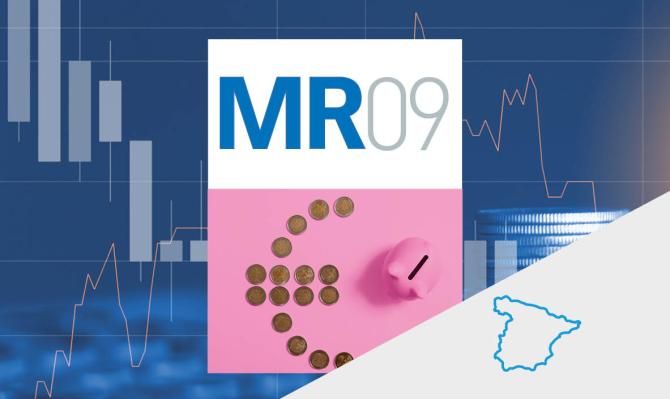The Spanish economy remained resilient in the first half of 2023, but challenges dominate the second half

GDP recorded notable growth during the first half of the year, with quarter-on-quarter rates of 0.5% and 0.4% in Q1 and Q2, respectively. In contrast, the first indicators available for Q3 show that the pace of growth is moderating. This slowdown corresponds to an environment in which the growth of our main trading partners is cooling, the tourism sector is moderating its growth rate due to having already recovered its pre-pandemic levels of activity and in which the tightening of monetary policy is taking its toll. Overall, the impact of the good data for the first half of the year overrides the slowdown we project for the second half, leading us to revise the GDP growth forecast for 2023 as a whole up by 0.3 pps, to 2.3%. Nevertheless, we do not rule out revising this forecast to the downside in the coming months if the signals from the indicators continue to deteriorate.
In Q2 2023, GDP grew by 0.4% quarter-on-quarter (1.8% year-on-year) thanks to the strength of domestic demand, as private consumption truncated its downward trend and rose a significant 1.6% quarter-on-quarter, driven by the moderation of inflation rates. Investment also registered significant growth of 4.6%, driven by increases in investment in capital goods (1.0% quarter-on-quarter) and, above all, in construction (7.3%). On the side of the foreign sector, exports fell more sharply than imports (–4.1% and –1.0% quarter-on-quarter, respectively). The reduction in exports was the result of a sharp contraction in exports of goods (–5.9%), while those relating to tourism services grew by 1.5%. Thus, in quarter-on-quarter terms, domestic demand contributed 1.8 pps to GDP growth, while foreign demand contributed 1.4 pps.

In August, the Purchasing Managers’ Index (PMI) for the manufacturing sector suffered a significant deterioration due to a contraction in order book volumes, bringing it down to 46.5 points. This is 1.3 points below the July reading and well below the threshold that delimits growth (50 points). This reading suggests that the rate of contraction in industrial activity has accelerated compared to previous months. The PMI for the services sector also fell sharply, by 3.5 points, placing it at 49.3, also in contractionary territory. Also, in August, the number of registered workers affiliated with Social Security increased by some 18,000 people in seasonally adjusted terms, which is below the average monthly growth rate of around 52,000 affiliates in Q2. With the data for July and August, the number of registered workers grew at a rate of 0.1% relative to the Q2 average, compared to the 1.4% quarter-on-quarter increase recorded in Q2.

According to the LFS, employment increased in Q2 2023 by 604,000 people, marking the biggest quarterly increase in the series and far exceeding the usual growth for that quarter (+377,000 on average in 2014-2019). In seasonally adjusted terms, employment grew by 1.4% quarter-on-quarter (1.2% in Q1), the highest rate since Q3 2021 when the state of emergency due to the COVID-19 pandemic came to an end. In addition, the unemployment rate fell from 13.3% to 11.6%, its lowest level since 2008.

Headline inflation rose in August to 2.6% (2.3% in July), according to the National Statistics Institute’s flash indicator, while underlying inflation (excluding energy and unprocessed food) moderated to 6.1% (6.2% in July). The NSI has not published the breakdown by component, but stressed that the rise in headline inflation was mainly driven by the increase in fuel prices. In July, the month for which we do have the breakdown by component, headline inflation stood at 2.3% (1.9% in June). That increase was due to several factors. Firstly, it was driven by the increase in fuel prices, up 1.7% month-on-month, in contrast to the decrease observed a year earlier, of –2.1% month-on-month. Secondly, core inflation rose to 4.8% (4.3% in June), driven by a lower monthly decline in clothing and footwear prices than in July 2022 and a higher rise in tourist package tour prices than a year ago. Thirdly, the increase in unprocessed food prices rallied from 6.3% to 8.9%. It should also be noted that the base effects, which during the first half of the year have contributed substantially to reducing inflation, will be much more moderate in the second half of 2023 and could even slightly counteract its reduction.

The current account balance remained in a healthy position in the first half of the year and posted a surplus of 18,981 million euros, contrasting with the cumulative deficit in the first six months of 2022 (–2,021 million). On the one hand, the tourism sector exhibited very strong data with a surplus of 27,426 million, an all-time high in the first half of the year. On the other hand, the trade deficit moderated to 16,420 million (–31,963 million a year ago). This was thanks to the reduction of the energy deficit to 16,705 million, compared to 25,896 million in the same period of 2022, as well as the improvement in the balance of non-energy goods, which posted a surplus
of 285 million compared to last year’s deficit of 6,069 million.

Consolidated tax revenues (excluding local government corporations) to May grew by 7.8% year-on-year, down from 12.0% in the same period of 2022. While direct taxes and social security contributions are growing at a steady rate due to the growth of employment, indirect taxes are slowing down due to the VAT cuts and the moderation of inflation.
